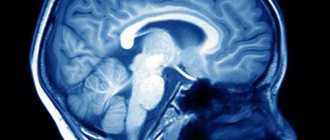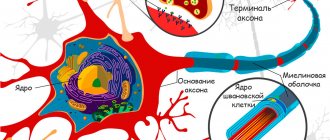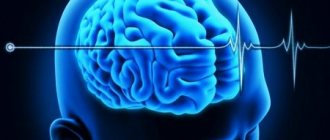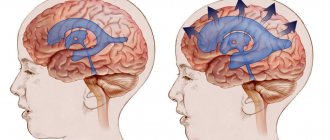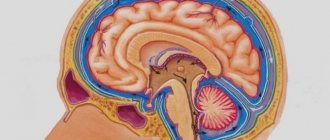Mikhailova Irina Iosifovna - psychiatrist, candidate of medical sciences, senior researcher, Federal State Budgetary Institution "NTsPZ" RAMS.
Orlova Vera Aleksandrovna - Doctor of Medical Sciences, Chief Researcher Federal State Budgetary Institution "NTsPZ" RAMS, Obninsk.
Berezovskaya Tatyana Pavlovna - Doctor of Medical Sciences, Federal State Budgetary Institution "Medical Radiological Research Center" of the Ministry of Health of the Russian Federation, Obninsk.
Shavladze Nikolay Zurabovich - graduate student, Federal State Budgetary Institution "Medical Radiological Research Center" of the Ministry of Health of the Russian Federation, Obninsk.
Minutko Vitaly Leonidovich - Doctor of Medical Sciences, Professor, Head of the Mental Health Clinic, Moscow.
- FSBI "NTsPZ" RAMS, Moscow;
- Federal State Budgetary Institution "Medical Radiological Research Center" of the Ministry of Health of the Russian Federation, Obninsk;
- Mental Health Clinic, Moscow;
“Bulletin of the Russian Research Center for Reconstruction and Research of the Ministry of Health of the Russian Federation” N13 , 03/30/2013
Introduction
Using intravital brain imaging methods, numerous data have been accumulated on anomalies of a number of cerebral structures in schizophrenia (cerebral ventricles, frontal and temporal cortex, thalamus, etc.) [2, 4, 16, 17, 20]. At the same time, the question of the nature of the detected changes remains not entirely clear and continues to be widely discussed in terms of the concepts of schizophrenia as a disorder of brain development, or an ongoing neurodegenerative process, relationships with hereditary and environmental factors [4, 5, 13, 14, 15, 18, 19].
Material and research methods
A study of patients with paroxysmal schizophrenia was conducted using MRI using the vascular mode. All patients underwent inpatient treatment at the Mental Health Clinic in 2009–2011. Clinical diagnosis of schizophrenia was carried out according to the criteria of the taxonomy of mental disorders adopted by the National Center for Mental Health of the Russian Academy of Medical Sciences and according to ICD-10. Of the 62 patients examined, 30 (1st group) had an attack-like-progressive (fur-like) form of the disease (F20.01, F20.02) with a stable or increasing defect and the persistence of residual hallucinatory-delusional disorders in remission.
In 32 patients (group 2), a recurrent (F20.03) form with remissions without residual psychotic symptoms and deficit disorders was identified. The age of the patients varied from 18 to 58 years, with the majority of patients aged from 18 to 39 years (57 people). The average duration of the disease from the moment of its manifest manifestations in most cases (47) did not exceed 9 years and in the 1st and 2nd groups of patients was 8.9 years and 4.9 years, respectively. 18 patients were admitted to a psychiatric hospital for the first time and practically did not take psychotropic drugs. 33 people took psychotropic drugs irregularly during interictal periods, and refused to take them before admission to the hospital. Syndromic psychopathological assessment of the condition of patients of groups 1 and 2 at the time of examination is reflected in Table. 1. None of the studied patients had severe somatic diseases, organic diseases of the central nervous system, or alcohol and drug addiction.
Table 1. Characteristics of the examined sample of patients with schizophrenia.
| Forms of schizophrenia | fur-like | recurrent | Total | ||
| Number of patients examined | 30 | 32 | 62 | ||
| Gender distribution | m | 15 | 14 | 29 | |
| and | 15 | 18 | 33 | ||
| Age range at the time of examination | 18-58 | 18-51 | 18 — 58 | ||
| Average age at the time of examination | 31,5 ± 9 | 29,6 ± 8,85 | 30,5 ± 9,3 | ||
| Average duration of illness | 8,9 | 4,9 ± 5 | 7 ± 7,7 | ||
| Leading syndrome | Catatonic-paranoid | 8 | 2 | 10 | |
| Hallucinatory-delusional | 15 | 3 | 18 | ||
| Affectively delusional | 7 | 26 | 33 | ||
The severity of the condition in the studied groups of patients with schizophrenia practically did not differ. In both forms, patients were hospitalized due to a rapid increase in psychotic symptoms, reaching a similar degree of severity (the average value on the Brief Psychiatric Scale BPRS for the paroxysmal-progressive form was 40.5 ± 6.8 points, and for the recurrent form – 40.7 ± 6, 3 points). Intergroup differences were noted only in the syndromic structure of psychosis: in the paroxysmal-progressive form, catatonic-paranoid and hallucinatory disorders had a greater share than in the recurrent form, with similar severity of affective disorders (Table 1).
The MRI examination was carried out on a 1.5T tomograph from Siemens (Germany) using the vascular mode without contrast. The tomograms were evaluated by an experienced neuroradiologist. The frequency of abnormalities in the condition of the cerebral ventricles (lateral, 3rd), subarachnoid spaces, fissures, as well as the condition of perivascular spaces, venous sinuses, including sigmoid and transverse sinuses, disorders of venous circulation in general, and anomalies in the structure of arteries was calculated. The significance of intergroup differences was calculated by Fisher's angular transformation. The intergroup difference was considered significant when the calculated Phi value was more than 1.64.
Research results and discussion
Analysis of tomographic images revealed any MRI signs of brain abnormalities in almost all patients in the studied sample (Table 2).
Table 2. Frequency of occurrence of MRI signs of brain abnormalities in the studied groups of patients with schizophrenia
| Pathology detected by MRI | Form of schizophrenia | |||||||
| Fur-shaped | Recurrent | Total | ||||||
| Number of patients | ||||||||
| Abs. | % | Abs | % | Abs. | % | |||
| Expansion of subarachnoid spaces: | 19 | 65,5 | 16 | 51,6 | 35 | 57,4 | ||
| - entire hemispheres | 0 | 0 | 2 | 12,5 | 2 | 5,7 | ||
| -frontal and parietal lobes | 8 | 42 | 10 | 62,5 | 18 | 51,4 | ||
| - frontal lobes | 4 | 21 | 0 | 0 | 4 | 11,4 | ||
| - parietal lobes | 1 | 5,3 | 3 | 18,8 | 4 | 11,4 | ||
| Expansion of cortical grooves | 7 | 23,3 | 3 | 9,7 | 10 | 16,4 | ||
| - entire hemispheres | 3 | 43 | 2 | 66,7 | 5 | 50 | ||
| -frontal and parietal lobes | 3 | 43 | 0 | 0 | 3 | 30 | ||
| - frontal lobes | 1 | 14,3 | 0 | 0 | 1 | 10 | ||
| — parietal lobes | 0 | 0 | 1 | 33,3 | 1 | 10 | ||
| Total pathology of the ventricular system | 19 | 63,3 | 13 | 41,9 | 31 | 50,8 | ||
| -expansion of the anterior horns of the lateral ventricles* | 8 | 42 | 3 | 23,1 | 11 | 35,5 | ||
| -narrowing of the anterior horns of the lateral ventricles | 2 | 10,5 | 4 | 30,8 | 6 | 19,4 | ||
| -expansion of the central part of the lateral ventricles* | 13 | 68,4 | 5 | 38,5 | 18 | 58,1 | ||
| -dilatation of the inferior horns of the lateral ventricles | 7 | 36,8 | 3 | 23 | 10 | 32,3 | ||
| -expansion of the posterior horns of the lateral ventricles* | 8 | 42 | 3 | 23 | 11 | 35,5 | ||
| -dilatation of the 3rd ventricle | 7 | 36,8 | 4 | 30,8 | 11 | 35,5 | ||
| - asymmetry of the lateral ventricles | 8 | 42 | 4 | 30,8 | 12 | 19,7 | ||
| Expansion of perivascular spaces | 20 | 77 | 20 | 66,7 | 40 | 65,6 | ||
| -diffuse | 4 | 20 | 2 | 10 | 6 | 15 | ||
| -border of the parietal and occipital zone, white matter | 7 | 35 | 8 | 40 | 15 | 37,5 | ||
| -subcortical space (white and gray matter) | 4 | 20 | 7 | 35 | 16 | 40 | ||
| -subcortical space (white matter) | 8 | 40 | 1 | 5 | 9 | 22,5 | ||
| -basal ganglia* | 8 | 40 | 15 | 75 | 23 | 57,5 | ||
| -trunk (white and gray matter) | 1 | 5 | 6 | 30 | 7 | 17,5 | ||
| Perivascular cysts | 4 | 13,3 | 2 | 6,5 | 6 | 9,8 | ||
| Foci of dystrophy* | 3 | 10 | 10 | 32,3 | 13 | 21,3 | ||
| - diffuse in the white matter of the hemispheres | 0 | 0 | 2 | 20 | 2 | 15,4 | ||
| - white matter of the hemispheres | 2 | 66,7 | 5 | 50 | 7 | 53,9 | ||
| - subcortical white matter and basal ganglia | 1 | 33,3 | 0 | 0 | 1 | 7,7 | ||
| - white matter subcortical | 0 | 0 | 3 | 9,7 | 3 | 23,1 | ||
| Anomalies in the structure of arteries* | 10 | 33,3 | 3 | 10,4 | 13 | 21,3 | ||
| — posterior trifurcation of the right or left internal carotid arteries | 5 | 50 | 3 | 100 | 8 | 61,5 | ||
| — anterior trifurcation of the right or left internal carotid arteries | 2 | 20 | 0 | 0 | 2 | 15,4 | ||
| — open circle of Willis | 2 | 20 | 0 | 0 | 2 | 15,4 | ||
| — hypoplasia of the right or left vertebral arteries | 2 | 20 | 1 | 33 | 3 | 23,1 | ||
| Impaired blood circulation in the veins | 7 | 23,3 | 5 | 16 | 12 | 19,7 | ||
| Pathology of the venous sinuses, reflecting changes in blood flow speed | 13 | 43,3 | 11 | 35,5 | 24 | 39,3 | ||
| - weakening of the signal of the transverse and sigmoid sinuses | 5 | 38,5 | 4 | 36,4 | 9 | 37,5 | ||
| -asymmetry of the sigmoid sinus signal | 8 | 61,5 | 7 | 63,6 | 15 | 62,5 | ||
| Asymmetry of arterial diameter | 4 | 13,3 | 6 | 19,4 | 10 | 16,4 | ||
| —asymmetry of the posterior communicating arteries | 2 | 50 | 5 | 83,3 | 7 | 70 | ||
| —asymmetry of the anterior cerebral arteries | 2 | 50 | 1 | 16,7 | 3 | 30 | ||
| Anomalies of brain development (Verga's cyst, Rathke's pouch cyst, mega cisterna magna, “empty sella turcica”, arachnoid cyst in the area of the tentorium cerebellum notch) | 4 | 13,3 | 2 | 6,4 | 6 | 10 | ||
*significant differences in intergroup comparisons (calculated Phi value more than 1.64).
Note. The names of anomaly groups are highlighted in bold. Percentages were calculated from the total number of patients in a given diagnostic group. MRI signs included in this group are indicated in regular font. Percentages were calculated from the total number of patients with any MRI sign of this group.
The table shows that the most common pathology in the studied patients with schizophrenia were both well-known enlargements of the ventricular system of the brain (50.8% of cases) and subarachnoid spaces (57.4% of cases), reflecting hydrocephalus, and those first identified in this study abnormalities of the vascular system, which are more common. Only 5 people with a recurrent form of schizophrenia (16.7%) and 7 people (22.6%) with paroxysmal-progressive (fur-like) form had no MRI signs of vascular disorders. The absence of the mentioned disorders did not depend on gender, age, duration of the disease and treatment.
The identified vascular disorders were manifested by the expansion of perivascular spaces, the formation of vascular cysts, signs of venous circulation disorders (including pathology of the venous sinuses) and congenital anomalies of the structure of the arteries (mainly in the form of anterior and posterior trifurcation of the internal carotid arteries). The data obtained indicate disturbances in cerebrospinal fluid dynamics associated with pathology of cerebral circulation. The tomographic picture of the disturbance of venous outflow, along with the expansion of the perivascular spaces and the formation of perivascular cysts, indicate a more or less pronounced swelling of the brain tissue. The pathology in question is discussed as being associated with the development of psychopathological symptoms of varying severity [11]. On the other hand, the phenomena of a kind of cerebral edema in schizophrenia are well known in autopsy practice [6].
It is noteworthy that in the studied patients, along with cases of widespread pathology with diffuse expansion of the perivascular spaces, there were cases with localization of this pathology in the region of the brainstem and subcortical structures involved in the formation of the ventricular system of the brain, the pathology of which is considered the most common in schizophrenia. The identified localization on the border of the parietal and occipital zones (37.5% of cases), which is related to the morphofunctional “overlap zones” associated with information processing and integrative brain activity, is also important. In 21.3% of cases, focal changes were detected mainly in the white matter of the subcortical structures and hemispheres. According to ultramicroscopic studies on postmortem material, damage to the white matter is characteristic of schizophrenia [9].
It is necessary to mention that dyscirculatory phenomena in the brain can occur in patients with schizophrenia due to long-term use of antipsychotic drugs that lower blood pressure. However, as shown by a specially conducted additional analysis, MRI signs of vascular pathology were also detected in primary cases. In addition to a significant proportion of patients with primary psychosis (29.5%), as noted above, 33 people (54%) took medications irregularly during the interictal period, and abandoned them when the process worsened. Upon admission to the clinic, minor manifestations of hypotension were noted in only 3 people.
It should be noted that in 10% of cases, anomalies of brain development were identified (Verge's cyst, Rathke's pouch cyst, etc. - see Table 2) associated with dysfunctions of the brainstem, cerebellum and pituitary gland, as well as impaired cerebrospinal fluid and hemodynamics in the corresponding areas brain
Thus, structural changes in the brain identified using MRI reflect both disease-related dystrophic and degenerative processes in the nervous tissue, combined with disturbances in liquorodynamics and all components of the cerebral circulation (collector system, large vessels and capillary network), and dysontogenetic stigmata in the base area brain. These data confirm the results of our previous studies, which showed that MRI signs of brain abnormalities in schizophrenia are both related to the ongoing disease process and congenital in nature [2, 4, 5].
The presented data reveal noticeable quantitative and qualitative intergroup differences in the frequency of occurrence of certain MRI signs of brain abnormalities in the two studied groups of patients. In the group of patients with fur-like schizophrenia, MRI signs of pathology were generally more common. Signs of neurodegeneration such as expansion of the subarachnoid spaces, with the exception of the frontoparietal region, and expansion of the cortical sulci in this group compared with the group of patients with recurrent schizophrenia were more common (65.5% and 51.6%, 23.3% and 9. 7%, respectively), although this difference did not reach statistical significance. Among the anomalies of the ventricular system, these patients were significantly more likely to have dilation of the anterior and posterior horns and the central part of the lateral ventricles, which may indicate a greater severity of degenerative processes in the area of the corpus callosum, anterior commissure and caudate nucleus - areas whose sources of blood supply are the branches of the internal carotid arteries, mainly the anterior cerebral artery.
Interestingly, in the same group, cases of trifurcation of the internal carotid arteries were significantly more common (Fig. 1).
Figure 1. Patient B., 20 years old. Posterior trifurcation of the right ICA. MR angiogram.
Considering that this pathology changes the territory of vascularization of brain tissue and significantly reduces the possibility of developing vascular collaterals and supplying the brain with oxygen [8], it can be considered as a pathogenetic factor that aggravates the course of the disease, and hypothetically as one of the risk factors for its development.
Significantly more often than in the group of patients with recurrent schizophrenia, disorders of the venous circulation, including pathology of the venous sinuses, as well as expansion of the perivascular spaces and the formation of perivascular cysts, were also encountered in this group.
Thus, in patients with paroxysmal schizophrenia (coat-like, recurrent), along with reduction of brain tissue, quite pronounced signs of vascular pathology are revealed, which can act as a pathogenetic link in the formation of neurodestructive processes. In addition, taking into account the data on the contribution of genetic factors to the variability of MRI parameters of the brain in schizophrenia [4], the described disorders may indicate the presence of a single etiological factor that distorts ontogenesis at the intrauterine stage and contributes to the formation of the schizophrenic process.
In the recurrent form of schizophrenia, expansion of the perivascular spaces in the basal ganglia and the presence of focal changes, mainly in the white matter of the brain (almost 1/3 of cases), are significantly more often observed, and narrowing of the anterior horns of the lateral ventricles associated with edema is not significantly more often observed, which reflects the cause of the pathology mainly microcirculation disorders.
Separately, we can consider the phenomenon of MRI asymmetry - signs of brain abnormalities. From Table 2 it is clear that it concerns degenerative processes, presented both in the form of uneven expansion of the lateral ventricles (Fig. 2), and blood supply to the brain, in particular, anomalies in the structure of the circle of Willis in the form of trifurcations of the internal carotid arteries, pathological asymmetry in the diameter of the posterior connecting and anterior cerebral arteries and asymmetry of the sigmoid sinuses.
Figure 2. Patient K., 32 years old. Asymmetry of the bodies of the lateral ventricles. MR tomogram in T2 mode.
Table 3. Frequency of occurrence of left- and right-sided asymmetries of MRI signs in the studied groups of patients with schizophrenia.
| Abnormalities detected by MRI | Form of schizophrenia | |||||||||||
| Fur-like | Recurrent | Total | ||||||||||
| On right | Left | On right | Left | On right | Left | |||||||
| Abs. | % | Abs. | % | Abs. | % | Abs. | % | Abs. | % | Abs. | % | |
| Dilatation of the lateral ventricle | 3 | 37,5 | 5 | 62,5 | 4 | 100 | 0 | 0 | 7 | 58,3 | 5 | 41,7 |
| Sigmoid sinus signal attenuation | 4 | 50 | 4 | 50 | 7 | 100 | 0 | 0 | 11 | 73,3 | 4 | 26,7 |
| Increased diameter of the posterior communicating artery | 1 | 50 | 1 | 50 | 1 | 25 | 4 | 75 | 2 | 28,6 | 5 | 71,4 |
| Increased diameter of the anterior cerebral artery | 0 | 0 | 2 | 100 | 0 | 0 | 1 | 100 | 0 | 0 | 3 | 100 |
| Anomalies in the structure of arteries: | 4 | 57 | 3 | 43 | 2 | 66,7 | 1 | 33,3 | 6 | 60 | 4 | 40 |
| Posterior trifurcation of the ICA | 3 | 60 | 2 | 40 | 2 | 66,7 | 1 | 33,3 | 5 | 62,5 | 3 | 37,5 |
| Anterior trifurcation of the ICA** | 1 | 50 | 1 | 50 | 0 | 0 | 0 | 0 | 1 | 50 | 1 | 50 |
| Total | 12 | 44,4 | 15 | 65,6 | 14 | 66,7 | 7 | 33,3 | 26 | 54,2 | 22 | 45,8 |
*Determining the reliability of intergroup differences in the data in Table 3 was not possible due to the small number of observations.
** ICA – internal carotid artery.
From Table 3 it can be seen that the ratio of the frequency of occurrence of asymmetries of a right-sided and left-sided nature in the studied groups of patients is different - in the fur-shaped form of schizophrenia, the left-sided nature of the asymmetry occurs almost one and a half times more often than the right-sided one. In the recurrent form, on the contrary, right-sided asymmetry is observed twice as often as left-sided asymmetry. At the same time, manifestations of neurodegeneration in the form of expansion of the lateral ventricle in paroxysmal-progressive schizophrenia are predominantly left-sided in nature, and right-sided and left-sided anomalies of the vascular system occur with a similar frequency. In the recurrent form of schizophrenia, the polarity of the asymmetry of abnormal MRI signs is more pronounced: the expansion of the lateral ventricle, as well as the weakening of the sigmoid sinus signal, indicating a decrease in blood flow velocity, is exclusively right-sided, while the increase in the diameter of the anterior cerebral and posterior communicating arteries is left-sided.
According to literature data [8], an increase in the diameter of cerebral arteries can be interpreted as an adaptation to cerebrovascular pathology. Taking into account the mechanisms of neurohumoral regulation of cerebral blood flow [3, 10], and, in particular, the increase in the tone of venous vessels with an increase in the concentration of carbon dioxide in the blood [1], as well as the greater resistance of the right hemisphere to chronic hypoxia, and the left hemisphere to acute, we can interpret the following data in favor of a more diffuse nature of vascular pathology in paroxysmal-progressive schizophrenia, its more chronic, permanent nature and greater significance for its formation of predispositional anatomical anomalies, which determine the persistent inferiority of its compensatory capabilities. The described phenomena are consistent with the greater severity of neurodegenerative processes in this form of schizophrenia, the topography of which largely depends on the topography of vascular anomalies.
Types of extracerebral brain tumors
Extracerebral formations of the brain differ from intracerebral ones in the long-term absence of characteristic clinical symptoms. Often, patients may be unaware of the presence of any clinical signs, leading to late detection. This significantly complicates treatment procedures and removal of extracerebral brain tumors. Such a disease can only be detected by chance or in the later stages of development.
Most often, extracerebral formations appear from blood vessels, connective tissue and membranes. For example, meningiomas are relatively benign tumors that arise from cells of the arachnoid mater. Volumetric formations are formed mainly in women after 30 years. They can reach quite large sizes if they are not detected in time and therapeutic procedures are not carried out.
Most often, meningiomas form in the area of the cranial fossa. In this case, the patient experiences a significant deterioration in the sense of smell, and various disorders may also appear. If the formation forms in the crown area, compression of the optic nerves is possible.
Neuromas are benign neoplasms that arise from Schwann cells as part of cranial and spinal nerve pairs. There are several types of neuromas based on their histological structure. Macroscopically, they are lobular formations, which are “dressed” in a capsule of connective tissue. In some areas, a large number of vessels with a thickened wall of hyaline fiber appear. In some cases, venous-type lacunae appear. IN
conclusions
The results of the study showed the important role in the pathogenesis and pathoplasty of the schizophrenic process of the features of the functional and anatomical pathology of the cerebral circulatory system, which is related to both the current neurodegenerative process and congenital disorders of brain development. The MRI signs of pathology of the vascular system of the brain, which were first identified, confirm the data on the disruption of the blood-brain barrier in this disease [12, 13] and may be associated with inflammatory changes in the vascular wall. The data obtained indicate the need for further research into the role of infectious agents, especially viral factors causing serous inflammation, in the pathogenesis of schizophrenia. In addition, the results of the study, even at this stage, clearly indicate the need to introduce means of normalizing cerebral hemodynamics into the treatment algorithm for patients with schizophrenia.
A comment
Knowledge of anatomy, the ability to navigate and distinguish the structures of the nervous system, of course, are necessary in the work of a practicing surgeon; the quality of the surgeon’s work and the results of surgical intervention directly depend on knowledge of the anatomy of the brain. Questions of methods for studying the structure of the human brain always remain relevant. Despite the fact that the structure of associative tracts has been studied for more than a century, these data often remain outside routine clinical practice. This study will allow the use of the presented materials in the work of various anatomical laboratories for the purpose of teaching and further studying the variable anatomy of the brain.
The authors conducted a unique anatomical study of 18 human brain specimens, presented their modification of the Klingler technique, and gave a detailed step-by-step description of the dissections of each bundle.
Despite the difficulty of anatomical dissection, most of the known association fascicles of the brain have been isolated. Among them: arcuate, superior longitudinal, inferior longitudinal, inferior fronto-occipital, uncinate and frontal oblique fasciculi. The current world literature data on the variants of the structure and functional significance of the studied bundles are presented in detail. We consider it necessary to continue this work in order to determine the patterns of structure of these bundles in people of different sexes and ages, further study of their functions, as well as, if possible, the dynamics of the structure of associative pathways in ontogenesis.
Surgery of intracerebral tumors requires knowledge of the anatomy and topography of the pathways for competent preoperative planning. A fairly large study of human brain preparations has been carried out and the possibilities of isolating various bundles have been determined. Comparison of anatomical data with clinical and radiological data will be the next stage in studying the problem. The work is another step in world practice, bringing us closer to the use of knowledge about the structure of association bundles in routine clinical practice.
I.N. Bogolepova (Moscow)

